Bancroft Library
A spearhead for the barrio: the educational activism of Ernesto Galarza
From the Archives
By Adam Hagen
UC Berkeley’s Oral History Center houses a number of oral histories that center the lives of Mexican American activists. One such history, Burning Light: Action and Organizing in the Mexican Community in California, contains the recorded speeches and interviews of Ernesto Galarza from the late 1950s through the early 1980s, and provides a glimpse into the life of a man whose commitment to the Mexican American agricultural workers of California never wavered, even when he found himself a continent apart from them.
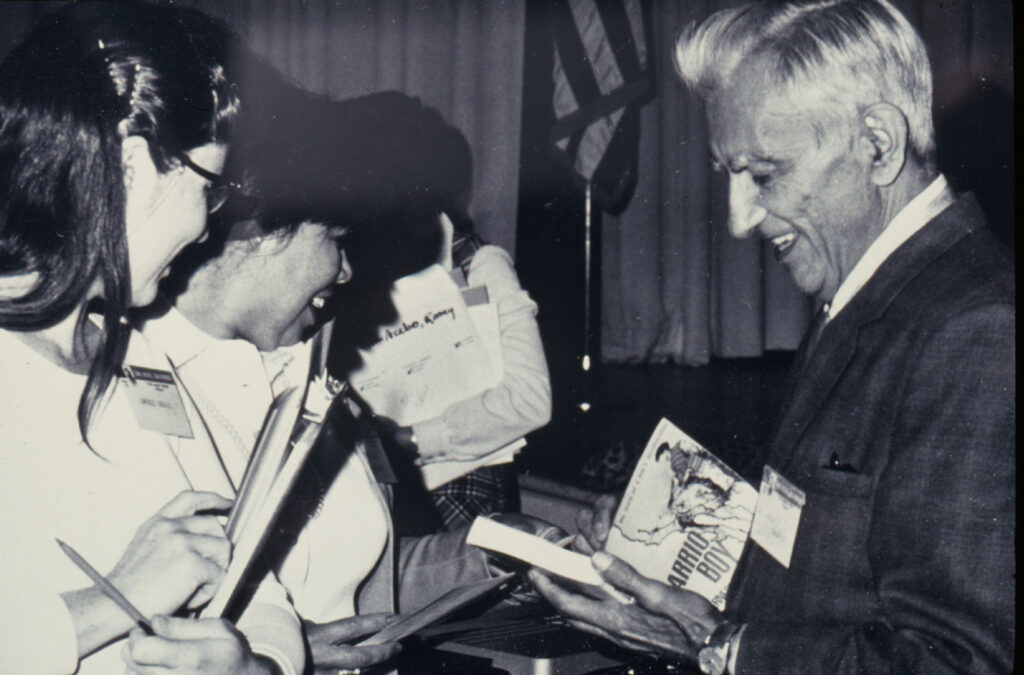
Galarza’s words, which he imbues with a certain dry poetry, recount a life of extraordinary experience and achievement: Galarza worked as an organizer with the United Farm Workers of America, where he was instrumental in bringing the bracero program to an end; as an educator at the elementary and collegiate levels; and for a time as the chairman of the development of bilingual educational material for the National Committee of Classroom Teachers. He also worked as a consultant for several organizations and institutions, including the government of Bolivia. A recurring theme in Galarza’s oral history, and the subject of this profile, is his efforts on behalf of bilingual education and Spanish literacy advancement in the Mexican American community.
Galarza was born in the village of Jalcocotán in the Mexican state of Nayarit in 1905. But fleeing the tumult of Francisco Madero’s revolution, he and his family came to Sacramento in 1911, when the Central Valley’s patchwork of farm property was not yet its present expanse and its limits did not so easily elude the eye. There, enveloped in a community of agricultural laborers in the Sacramento barrio, a young Galarza would see firsthand the struggles of Mexican Americans and braceros as they tried to navigate the foreign land in which they now found themselves. And, as his family was of modest means—exacerbated by his mother’s death in 1917—he too joined in this work from an early age. One of the recorded talks compiled in the oral history contains a poignant allusion to his communities’ challenges in adapting to life in the United States, and, as it deals with the matter of English language acquisition, reveals the seeds of his future work. In the talk, Galarza recalls that he “became a leader in the Mexican community at the age of eight for the simple reason that I knew perhaps two dozen words of English.”
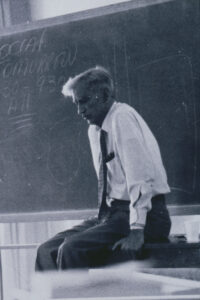
English proficiency, however, was only one of a number of skills that Galarza exhibited in his youth. His academic prowess was so apparent that Sacramento High School teacher Ralph Everett approached him personally and asked that he reconsider his plan to work at the Sacramento Libby, McNeill & Libby cannery after graduation, insisting that he attend college instead. Everett even went to great lengths to help Galarza gain admission to Occidental College in Los Angeles, the institution he would graduate from in 1927. After Occidental, Galarza would go on to earn a master’s degree in history from Stanford University in 1929 and a doctorate in sociology from Columbia University in 1944.
Galarza’s recollection of his time at these institutions reveals how rare it was for a “Mexicano” to have the opportunity to obtain a higher education in the early twentieth century. He had this to say at a talk for Chicano studies students at UC Berkeley in 1977:
The Chicano students that I knew in the thirties at Columbia and elsewhere were very few in number. At Columbia University I didn’t know another graduate student in the department of history or political science or public law, which is where I did my work. Neither were there many of us in the undergraduate institutions in Southern California where I went to college at Occidental. I remember, I think it was in 1925, out of sheer curiosity I inquired among my friends at UCLA, USC, Pomona, Whittier and all of that cluster of colleges in the south, and I could only identify six of us in all of those places. Of course, possibly that wasn’t a good count because even then there were some Chicanos who had already given up their identity. They had become anything but Mexicans. In those days, we didn’t talk about Chicanos. You were either a Mexicano or you were not.
His skills in English and consequent academic achievements were a relative anomaly among the bracero and Mexican American communities due to there being a dearth of bilingual and English language education resources at the time of his youth. According to Galarza, not until the latter half of the twentieth century did the federal government take the concept of bilingual education and English as a second language (ESL) education seriously and fund it in any substantial fashion. And, as he notes in his oral history, once funding did increase there remained a system that overlooked the intricacies of bilingual education; advisory committees in Washington attempted to regulate the bilingual and ESL instruction from afar, and their distance resulted in curriculum that was incongruent with students’ needs.
Concerned about this oversight, Galarza explains that he and other instructors working in bilingual education were actively challenging the Department of Health, Education and Welfare and the Office of Bilingual Education in the 1970s, and had begun to see success. As he says in the oral history, he felt their work “has been so effective, even modest as it is, that it has created waves that have become very ominous to them.”
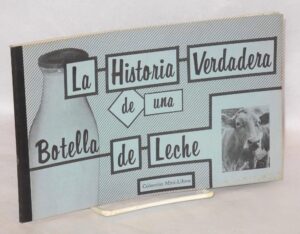
And beyond his pushing for better, more personalized bilingual education curriculum on an institutional level, Galarza—believing that Spanish literacy had to precede English instruction—took it upon himself to craft and publish what he called “Mini-Libros,” easy-to-read Spanish texts that he designed for use in the classroom and hoped would engage young readers. So as to make students as comfortable as possible, the Mini-Libros even contained vocabulary specific to Mexico and the working-class immigrants coming to the United States at the time.
These actions were especially timely because Mexican immigration into the US was greatly increasing in the 1960s and ’70s, a topic thoroughly discussed in the interview. Galarza recognized the wealth of challenges—from housing to employment to education—that came with incorporating such a massive population into the fabric of American society, and identified the issues of literacy and English proficiency as those he was most eager to help resolve.
Each summer in his undergraduate years Galarzo would return to Sacramento to do what he called “bread and butter work” in the farms and the cannery. Later, when he left California to study at Columbia and the path home was no longer so easily negotiated, his community’s want of literacy became a major concern, in part his due to its personal impact:
I began to be disturbed by the lack of news from home. My family and my friends back in Sacramento were not writers. They didn’t know, many of them, how to write…When I realized after my third or fourth year back in the East that this was happening to me, I became very disturbed. And while we stayed in the East another six years, that feeling never left me that what was happening back in California in all the towns that I knew and where I had worked, I was not keeping abreast of.
Galarza believed that the Mexican immigrant children coming into the school system in the mid-twentieth century had to be brought into the fold of American life, to be “acculturated,” in his words, so as to avoid the fate of his own family and community. And such acculturation could not begin with a hard-and-fast imposition of English instruction, something he believed would only further alienate the newly arrived immigrants, accelerate the creation of insular communities, and complicate their path to prosperity in the US. He viewed bilingual education as the obvious answer to this challenge. It would help a child, as he noted in his oral history, to “recognize—to get into—and become familiar with this strange environment into which he’s been dropped.”
Galarza’s oral history is an invaluable glimpse into the subtle divides of his time: for each acknowledgement of how badly the “American hosts” have treated Mexican Americans, he has another remark on the myopia of Mexican American activists due to their protests against acculturation—something he believed was “largely for the purposes of propaganda.” And beyond these commentaries, he proves to be equally invaluable as a representation of a steadfast activism that lacks glamour and prefers actions to words. Galarza identified the challenges of his time and repeatedly asked the central question: what to do about it?
Find this interview and all our oral histories from the search feature on our home page. You can search by name, keyword, and several other criteria.
Adam Hagen recently graduated UC Berkeley with majors in Spanish linguistics and history. Adam worked as a student editor for the Oral History Center and was also a member of the editing staff of Clio’s Scroll, the Berkeley Undergraduate History Journal.
Related Resources from The Bancroft Library
The Bancroft Library has more than thirty holdings by Ernesto Galarza, including poems, books, reports, pamphlets, conference proceedings, and audio of talks and panel discussions. From the UC Library Search, go to “Advanced Search,” select “UC Berkeley special collections and archives,” and in the search field, enter Ernesto Galarza.
The Chicana/o Studies Oral History Project provides a rare, firsthand look at the development of the field of Chicana/o studies over the last fifty years, as well as unique insight into the lives and careers of the pioneering scholars who shaped it.
The Oral History Center digital collection contains additional oral histories of Mexican American activists, such as Hope Mendoza Schechter and Herman E. Gallegos. More can be found by searching “Mexican American community” or “Mexican American activism” on the Oral History Center home page.
Ernesto Galarza’s oral history is part of the Oral History Center’s Advocacy and Philanthropy—Individual Interviews collection. Read more about the collection in the article by Lauren Sheehan-Clark, “Helping Hands: A Guide to the Oral History Center’s Advocacy and Philanthropy Individual Interviews.”
About the Oral History Center
The Oral History Center of The Bancroft Library preserves voices of people from all walks of life, with varying perspectives, experiences, pursuits, and backgrounds. We are committed to open access and our oral histories and interpretive materials are available online at no cost to scholars and the public. You can find our oral histories from the search feature on our home page. Search by name, keyword, and several other criteria. Sign up for our monthly newsletter featuring think pieces, new releases, podcasts, Q&As, and everything oral history. Access the most recent articles from our home page or go straight to our blog home.
Connection, Insight, Inspiration, Truth: Berkeley undergraduates reflect on oral history
“I was just one of thousands of people over the years who have done the little things necessary to create and to pass on personal narratives of the past.” —Mollie Appel-Turner
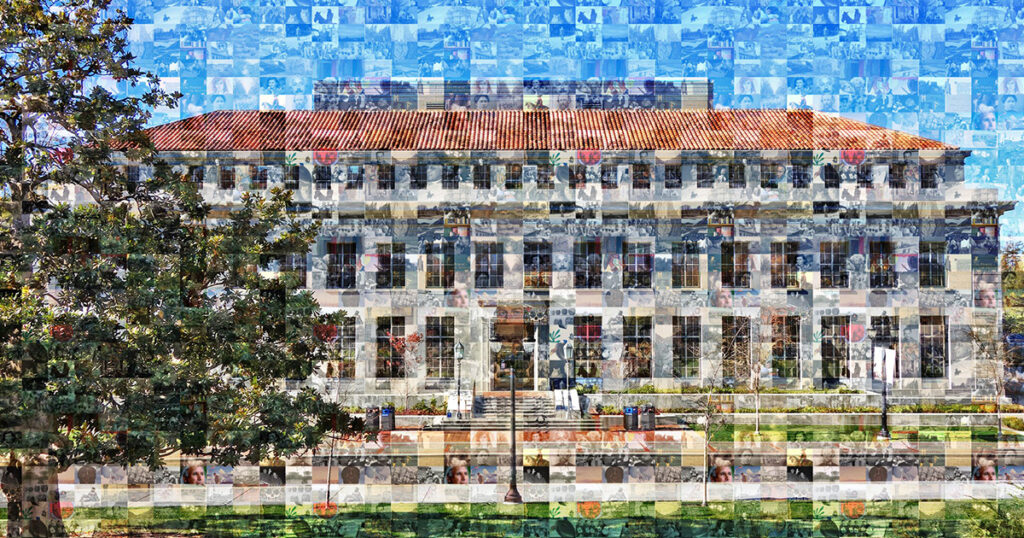
Introduction: Thoughts on the Production of Oral History and Its Importance
by Serena Ingalls, class of 2023
Like many of my student co-workers at the Oral History Center (OHC), I have recently graduated from UC Berkeley. Graduation from college is a major milestone, and I find myself looking back at all of my different experiences at Cal: classes, clubs, the pandemic, and my job as a student editor and researcher at the Oral History Center. My job in oral history in particular is a point of contemplation, as I’ve spent many hours in this role and it’s a unique experience that only a handful of other students can relate to. I find myself wondering, how has this job impacted me and my view of the world? How has my work in this role contributed to the field of history?
Before closing the UC Berkeley chapter in our lives and moving on to other post-grad interests, we as the student editors took the time to reflect upon our work at the Oral History Center and what it means to us. We hope that you’ll enjoy stepping into our world as student editors in oral history, just as we have enjoyed the experience of getting to know the many fascinating individuals in our oral history archive.
Editor’s note: Our team’s student editors serve critical functions in our oral history production, analyzing entire transcripts to write discursive tables of contents, entering interviewee comments, editing front matter, writing abstracts, and more. They do the work of professional editors and we would not be able to keep up our pace of interviews without them.
Mollie Appel-Turner: Oral History and Connection
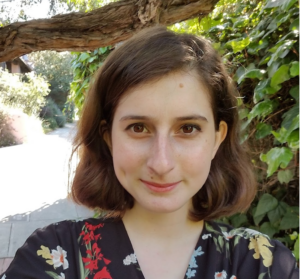
Working for the Oral History Center of The Bancroft Library while pursuing a history degree was both deeply rewarding and extremely unfamiliar. My area of interest when it comes to history has always been western medieval Europe. While there are plenty of sources from the era where people recount their life experiences, I always had an awareness of the massive separation—temporal, cultural, and physical—between myself and the speaker. At the Oral History Center, I was keenly aware that the work that I was doing on oral histories was with the ultimate goal of preserving knowledge for future generations. But for the time being, that gulf I was used to, which to me practically defined the work I did as history, was simply not present. In my time outside of work, I also spent a fair chunk of time reading people’s personal accounts. While these accounts differed in many ways from the oral histories that I worked on, as time passed, I came to see these different kinds of personal accounts as reflections of one another. I would frequently stop in the middle of my shift, cursor blinking next to a spelling error, and think about how I was just one of thousands of people over the years who have done the little things necessary to create and to pass on personal narratives of the past. The immediacy, and modernity of the accounts that I worked on at the Oral History Center, rather than widening the distance I felt between me and the medieval people I studied, made me feel closer to them in a way that I did not expect.
Mollie Appel-Turner joined the UC Berkeley Oral History Center as a student editor in fall 2021. She recently graduated with a degree in history with a concentration in medieval history.
Shannon White: Oral History and Inspiration
In my time at the Oral History Center, I have worked on and witnessed the publication of interviews from an innumerable variety of narrators, including artists, writers, curators, academics, conservationists, and otherwise “ordinary” people with extraordinary stories to tell. I recall the first oral history I worked on upon joining the Center: Thomas Gaehtgens, former director of the Getty Research Institute, whose interview was not only incredibly detailed but also quite interesting to read. More recently, I have helped edit interviews from the Chicana/o Studies Oral History Project, the Japanese American Intergenerational Narratives Oral History Project, and the California State Archives State Government Oral History Program.
As a member of the OHC’s editorial team, most of my work is behind the scenes and prior to publication. I see these interviews at almost every stage in production. By the time an oral history transcript is finalized, I have generally read through it in its entirety several times and am quite familiar with the contents; as such, I interact with oral history at multiple levels. This experience has ultimately helped form and maintain my view of oral history as an inherently dynamic, interactive record—a form of living history.
The final oral history is a labor of many people to produce, with several rounds of edits and review that heavily draw from the narrator’s own input, and as such possesses a strong sense of the narrator’s personal style: how they speak, what they consider important or even essential for understanding their stories, their sense of humor, and what elements of the initial oral interview they would prefer to keep private.
The result is a distinctively humanizing portrayal of the narrator that arises from the nature of oral history as a lightly edited, audio-based interview format. The reliance on the “oral” aspect of oral history means that, bar serious editing, the published transcripts of interviews from the OHC tend to preserve a great deal of the tone of the original audio recording, including quirks of speech unique to each narrator. My personal favorite detail is always the bracketed notes included by the transcriber to indicate when someone is laughing, a phenomenon that often accompanies the conversation between interviewer and narrator and, in my opinion, highlights the deeply personal nature of these interviews.
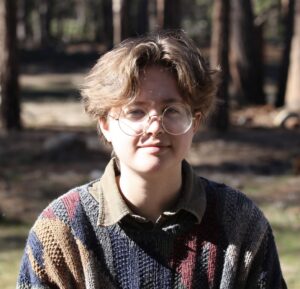
By sheer virtue of the volume of in-progress oral histories I interact with, I find that in time they become almost a part of you—there are so many narrators whose words and stories I remember, and whose work I have actively sought out after encountering their oral histories. For example, I became interested in Bay Area arts institutions after reading the interview of a San Francisco Opera board member; my own undergraduate research has been informed in no small part by border theory, a concept I was first introduced to by the narrators of the Chicana/o Studies Oral History Project; and my work on the oral histories of California politicians has contributed to my awareness of the history of the state’s politics. Oral history is intimate and alive, and its existence has the unique ability to inform and inspire those who engage with it.
Shannon White is a recent UC Berkeley graduate in the Department of Ancient Greek and Roman Studies. They were an undergraduate research apprentice in the Nemea Center under Dr. Kim Shelton and a member of the editing staff for the Berkeley Undergraduate Journal of Classics. Shannon worked as an editorial assistant for the Oral History Center.
Serena Ingalls: Oral History and Insight
Before working at the Oral History Center as a student editorial and research assistant, my interactions with oral history were limited. As a history major, it was a topic occasionally mentioned in my classes at Cal. I could understand the value in oral history as a way of filling in gaps in the historical record and giving a voice to those who were excluded from the written record. After I began my work with the OHC, however, I gained a new appreciation for oral history. This change in perspective came after seeing firsthand the immense effort that goes into producing oral histories to be shared with the public, and from reading the oral histories in our archive.
At the Oral History Center, I’ve worked in two roles. One of my roles is as a research assistant. In order to promote our archive and share our interviews with the public, we post on social media about relevant historical anniversaries (25th, 50th, 75th, 100th). I research these anniversaries and then search the archive to see if we have content that references these historical events. It’s surprising how many specific events are mentioned by interviewees, so I never discount an event without checking first with the archive. If there is one event that is very historically significant and has several interviews that reference it, sometimes I’ll write an article on the subject for the OHC. My other role is as an editorial assistant. Editorial assistants are part of the process of readying an oral history for publication. Student editorial assistants have a range of responsibilities during the editorial process which include inputting corrections from narrators, writing the table of contents, and more. Editing the oral history is a collaborative process, and it can take months or even years before an oral history is fully ready for publication. Once an oral history is completed and shared with the public, all who have worked on a particular oral history know the narrator inside and out.
The OHC has an enormous archive of interviews with narrators who have incredible insight on the history of California and beyond. Their voices provide knowledge, but more critically, they add life to these historical periods. The interviews are at times surprising, heartbreaking, and even funny, and no two interviewees have the same story. Each interview is a unique combination of the mundane and the extraordinary, just like the life of any person.
“Each interview is a unique combination of the mundane and the extraordinary, just like the life of any person.” —Serena Ingalls
Serena Ingalls recently graduated UC Berkeley with majors in history and French. She is an editorial and research assistant for the Oral History Center. Serena came up with the idea for an article about what it’s like to work on oral histories when she worked on an article about the seventy-fifth anniversary of the tape recorder.
William Cooke: Oral History and Truth
A few short months ago, I graduated from UC Berkeley. I have completed 12 political science courses; written dozens of sports articles for Berkeley’s independent student newspaper, The Daily Californian; struggled my way through one too many required science classes; and penned more than a few essays en route to a minor in history.
As a journalist and student, determining and advancing truth was at the heart of everything I did. For example, in order to make a sound political science argument about the role of agency in a democracy, I could not reinvent what Harriet Jacobs wrote in her autobiography, Incidents in the Life of a Slave Girl. Desiderius Erasmus had something specific to say about tyranny. What was it, exactly? Did Cal’s football team run or pass the ball more often on third down? If the United States federal government really did assume a different position towards organized labor after World War II, what evidence supports that claim?
The answers to my own questions, or the questions my professors asked of me, had to be completely truthful. I certainly couldn’t say that I didn’t have an answer to an essay prompt.
Oral history is a little bit different. When I first began working here last year, I couldn’t help but be skeptical. An interviewee in her eighties cannot with absolute accuracy remember her childhood years during the Great Depression, or her immediate reaction to the assassination of President Kennedy. Memory fails people all the time. A story might be true on the whole, I thought to myself, but the details might not. And what use was the answer “I don’t know?” That might be the truth, but what good is an oral history in which there are gaps?
In short, how could a researcher possibly find use in an incomplete, possibly inaccurate story told by someone fifty years after the fact?
Of course, these questions are not on my mind as I write a table of contents or fix formatting issues on a transcript. My work can be tedious at times. As someone whose mind likes to stay busy, I don’t mind. But every now and then I will stop and think critically about what I’m reading and how it relates to my role as a student, journalist, and assistant at the Oral History Center; namely, promoting truth.
I soon came to terms with the fact that oral histories cannot be totally accurate and that in an important way they are true. While the historian attempts to explain how people in the past saw themselves, their situation or others in very broad terms, the oral history provides insight into how a creator of history currently thinks of her past self, a valuable perspective for social scientists of all stripes. An interviewee might have felt more anxious than nervous at a certain moment in history, but how he remembers the past is also an important part of history. What good is there in knowing the true happenings if we do not know how the living, breathing makers of history think about what happened?
And for that reason, I have come to realize that oral history isn’t impure, or less true. I do still read the oral histories I work on with a wary eye. But I don’t worry about their truthfulness like I first did back in the spring of 2022. Instead, each time I complete my portion of a project, I feel a sense of gratification for having helped keep history alive. Because true history is not a fixed thing. It lives in the minds of everyone who has experienced it.
William Cooke recently graduated UC Berkeley with a major in political science and minor in history. In addition to working as a student editor for the Oral History Center, he is a reporter in the Sports department at UC Berkeley’s independent student newspaper, The Daily Californian.
Related Works
Serena Ingalls, Saving the Spoken Word: Audio Recording Devices in Oral History
Mollie Appel-Turner, Shirley Chisholm, Women Political Leaders, and the Oral History Center collection
William Cooke, Title IX in Practice: How Title IX Affected Women’s Athletics at UC Berkeley and Beyond and Heavy hitters: the modern era of athletics management at UC Berkeley
Shannon White, “I take this obligation freely:” Recalling UC Berkeley’s loyalty oath controversy
Jill Schlessinger, editor, A peaceful silence: Berkeley undergrads reflect on remote employment during the pandemic
About the Oral History Center
The Oral History Center of The Bancroft Library preserves voices of people from all walks of life, with varying perspectives, experiences, pursuits, and backgrounds. We are committed to open access and our oral histories and interpretive materials are available online at no cost to scholars and the public. You can find our oral histories from the search feature on our home page. Search by name, keyword, and several other criteria. Sign up for our monthly newsletter featuring think pieces, new releases, podcasts, Q&As, and everything oral history. Access the most recent articles from our home page or go straight to our blog home.
“Carolyn Merchant: My Life Exploring Science, Environment, and Ethics,” oral history release
New oral history: “Carolyn Merchant: My Life Exploring Science, Environment, and Ethics”
Video clip from Carolyn Merchant’s oral history on the 1970s social contexts for her book The Death of Nature
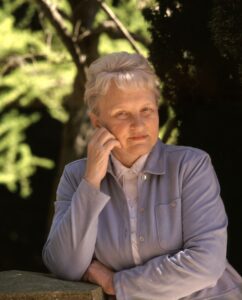
Carolyn Merchant is a Distinguished Professor Emerita of Environmental History, Philosophy, and Ethics at UC Berkeley. Her extensive research and teaching at Cal explored historical relationships between humanity, nature, and science with an ecofeminist focus on Western culture’s domination of nature and women. Throughout her academic career, Merchant published numerous peer-reviewed articles and wrote eleven books, as well as four edited volumes. Her genre-shaping publications—including The Death of Nature: Women, Ecology, and the Scientific Revolution (1980); Ecological Revolutions: Nature, Gender, and Science in New England (1989); Radical Ecology: The Search for a Livable World (1992), among others—influenced various academic fields from Women’s Studies to the History of Science, and from Ethics to Environmental History.
Merchant and I video-recorded seven hours of her oral history over four interview sessions in the spring of 2022. Those recordings resulted in a 132-page transcript that includes an appendix with photographs. Merchant’s full-life oral history not only explored her intellectual and academic career, but also recorded lesser known details from her female-centered childhood, her educational mentors, her personal relationships, and her social activism, all of which shaped her academic research and teaching at UC Berkeley.
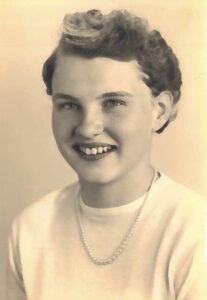
Merchant was born in 1936, in Rochester, New York, where she and her younger sister were raised by their mother, grandmother, and aunt. Merchant recalled how sharing a home with five strong women taught her that “women could do anything. …That gave me a role model unconsciously to know that I could do anything I wanted to.” As a high school senior in 1954, Merchant became a national top ten finalist in the Westinghouse Science Talent Search. She earned her AB in Chemistry from Vassar College in 1958, studied physics for a year at the University of Pennsylvania, and then, at the University of Wisconsin, Madison, she earned her MA in 1962 and her PhD in 1967 in the History of Science. Her graduate research explored the Vis Visa controversy in the seventeenth and eighteenth centuries over a “living force” in nature, from Gottfried Wilhelm Leibniz to Jean-Baptiste le Rond D’Alembert.
Video clip from Carolyn Merchant’s oral history on learning and teaching the history of science, 1960s and 1970s
During graduate school in Wisconsin, Merchant met and married botanist Hugh Iltis, with whom she had two sons, both of whom later graduated from UC Berkeley. Merchant also began her environmental activism during graduate school, which included lighting Wisconsin prairies on fire as a means to restore native plants and animal habitat. At that time, Merchant first read Betty Friedan’s The Feminine Mystique and Rachel Carson’s Silent Spring, which affected both her life and academic trajectories. In the late 1960s, upon completing her PhD thesis and her divorce from Iltis, Merchant and her sons moved from Wisconsin to Berkeley, California.

Merchant’s life on the west coast provided new opportunities and realizations. While teaching the History of Science as a Visiting Lecturer at Oregon State University, Merchant lived on a Corvallis farm where the runner-up Dairy Queen of the state of Oregon taught her how to milk goats and cows. Merchant’s back-to-the-land experiences would shape her later analysis on utopias and what she described as the “organic society,” from John Salisbury’s organic concept of the state in 1159, to Francis Bacon’s The New Atlantis in 1627. To support herself and her family back in Berkeley, Merchant worked as an adjunct instructor, which she eventually parlayed into a fulltime position. She taught as a Lecturer at the University of San Francisco, where by 1976 she became an Assistant Professor, and she also taught in the innovative, interdisciplinary, yet short-lived Strawberry Creek College program at UC Berkeley.
Throughout the 1970s in the Bay Area, Merchant engaged in feminist, environmental, anti-war, and anti-capitalist politics, which is how she first met UC Berkeley historian Charles Sellers, whom she later married. Over many decades together, Merchant and Sellers advocated for social justice and shared adventures traversing the United States in a camper van while searching for rare birds and visiting far flung archival collections. On the road, Merchant used some of the first laptop computers to draft her eventual publications. Back in the Bay Area, Merchant connected with intellectuals like Theodore Roszak and became a visiting scholar at Stanford’s Center for Advanced Study in Behavioral Sciences. Around that time, Merchant learned from a USF colleague that UC Berkeley planned to hire a professor to work in the then-nascent field of environmental history. “I can do that,” she said to herself, and walked up the hill from her house to campus to submit her application. As she recalled, “when I was interviewed, I was from Stanford, and I was not a local yokel four blocks away in Berkeley where my house actually was.”
Video clip from Carolyn Merchant’s oral history on her hiring at UC Berkeley’s College of Natural Resources, 1980

Women played a central role in Merchant’s research, as well as with her hiring at UC Berkeley in 1979. Merchant applied to the College of Natural Resources for a position in a new department then called Conservation and Resource Studies, which later became the Department of Environmental Science, Policy, and Management. On the hiring committee were five male faculty members and five female undergraduates. Many women took courses in the college, yet the faculty of the College of Natural Resources were still mostly men. After her on-campus interview, Merchant recalled “the students wanted a woman, and they lobbied. …They wanted to understand what role women had played in the environment, and how they used the environment, and how they developed as scientists and environmental scientists. And they liked me because I was interested in pursuing those topics and finding out by digging into the archives who the women were and what they had done.” The first three hires for the new department were all women. In 1980, one year after Merchant joined the faculty at UC Berkeley, she published The Death of Nature: Women, Ecology, and the Scientific Revolution, which remains in print today and has been translated into numerous languages. As Merchant recalled, when the book appeared, “there was a column in Newsweek, and then it was brought up at a congressional hearing. It [my book] was a criticism of what mechanistic science alone would do to the environment if it wasn’t associated with an ethic and some restraints and understanding of what the consequences were. So it was very gratifying to see that reception.”
The majority of Carolyn Merchant’s oral history explores her career as a Professor of Environmental History, Philosophy, and Ethics at UC Berkeley. The topics we discussed ranged from the evolution of Merchant’s research and teaching to her reflections on how the College of Natural Resources has changed over time. Generally, Merchant’s research and teaching examined the history and ethics of science and the environment through the lens of gender. As she noted during her oral history, “gender is so important and so central. Because most of human history, and most of even environmental history and the history of science, has been concerned with the roles that men play. And I want to make the roles that women play and the importance of gender as an equal thing, so that the roles of women are not obscured—and that women and men are equal partners not only in an existing political economy and a social economy, but they are equal partners in every aspect of trying to work together as partners to make the whole planet continue to live on.”
Video clip from Carolyn Merchant’s oral history on gendered reproduction
In her oral history, Merchant also addressed some of the specific, interrelated research themes that she developed throughout her career. One of those themes focused on science and domination, especially Merchant’s attention to impacts on nature as both a mental construct and a physical reality when institutions of science emerged within a patriarchal society. She also spoke about women and nature through the lens of ecofeminism. “Ecofeminism comes from a woman named Françoise d’Eaubonne in France,” Merchant explained. “Ecofeminism asserts the power of women and also their interrelationships with nature, and how women can save nature, and how women themselves can become important forces in the whole role of the conservation of resources.” Merchant discussed her partnership ethic, a contribution she made to environmental ethics in which humans of all genders, along with nonhuman nature, would be valued as equal partners inhabiting a flourishing earth. “Partnership makes nature and humans equal, and interactive, and sharing and giving,” Merchant declared, “and we have to conserve nature if we are going to go ahead and live in the future with an active nature and an active humanity.” In light of her own politics to protect and conserve nature, Merchant also reflected on about the importance of gendered reproduction, and how control of women’s bodies and the unpaid labor of those bodies are essential to the material, social, and cultural maintenance of a capitalist and patriarchal society. In contrast to the modern world’s focus on production, Merchant emphasized the need for reproduction: “allowing the reproduction of nature and its systems to continue is what is going to allow humanity to reproduce itself and to continue. …Because if we don’t allow the natural resources of the world to keep reproducing themselves, if we don’t set aside land or pass laws that prevent us from using everything up, we won’t be able to continue reproduction.”
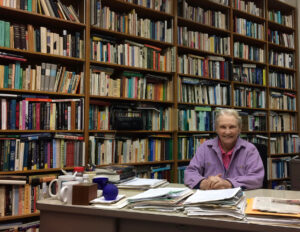 Carolyn Merchant’s oral history is now available to read online, even as the ever-worsening impacts of climate change create an interrelated set of crises for the Earth and all living organisms on it, including humanity. After her long career teaching and researching environmental topics at UC Berkeley, Merchant admitted, “of course, I’m distressed that we have all the environmental problems that we have now.” Yet, in the face of these crises, she also shared her optimism. “There’s also hope in the sense that there are laws being passed, there are people who are working continuously, and there are new societies and new organizations being formed. So we’re at a tipping point. And hopefully, we’ll go in the direction of conservation, and environmental justice, and environmental reform, and saving the Earth.”
Carolyn Merchant’s oral history is now available to read online, even as the ever-worsening impacts of climate change create an interrelated set of crises for the Earth and all living organisms on it, including humanity. After her long career teaching and researching environmental topics at UC Berkeley, Merchant admitted, “of course, I’m distressed that we have all the environmental problems that we have now.” Yet, in the face of these crises, she also shared her optimism. “There’s also hope in the sense that there are laws being passed, there are people who are working continuously, and there are new societies and new organizations being formed. So we’re at a tipping point. And hopefully, we’ll go in the direction of conservation, and environmental justice, and environmental reform, and saving the Earth.”
Video clip from Carolyn Merchant’s oral history on her partnership ethic for humanity and nature
Video clip from Carolyn Merchant’s oral history on becoming a national finalist in the Westinghouse Science Talent Search, 1954
ABOUT THE ORAL HISTORY CENTER
The Oral History Center of The Bancroft Library preserves voices of people from all walks of life, with varying political perspectives, national origins, and ethnic backgrounds. We are committed to open access and our oral histories and interpretive materials are available online at no cost to scholars and the public. You can find our oral histories from the search feature on our home page. Search by name, keyword, and several other criteria. Sign up for our monthly newsletter featuring think pieces, new releases, podcasts, Q&As, and everything oral history. Access the most recent articles from our home page or go straight to our blog home.
If you’d like to see more interviews like this conducted and made freely available online, please consider making a tax-deductible donation to the Oral History Center. While we receive modest institutional support, we are a predominantly self-funded research unit of The Bancroft Library. We must raise the funds to cover the cost of each oral history. You can give online, or contact us at ohc@berkeley.edu for more information about our funding needs for present and future projects.
Senga Nengudi: Black Avant-Garde Visual and Performance Artist
As a continuation of our work for the Getty Research Institute’s African American Art History Initiative (AAAHI), Dr. Bridget Cooks and I conducted several oral history interviews with the avant-garde artist Senga Nengudi. This interview is one of several AAAHI oral histories exploring the lives and work of Los Angeles-based artists, and highlights Nengudi’s contributions to visual and performance art.
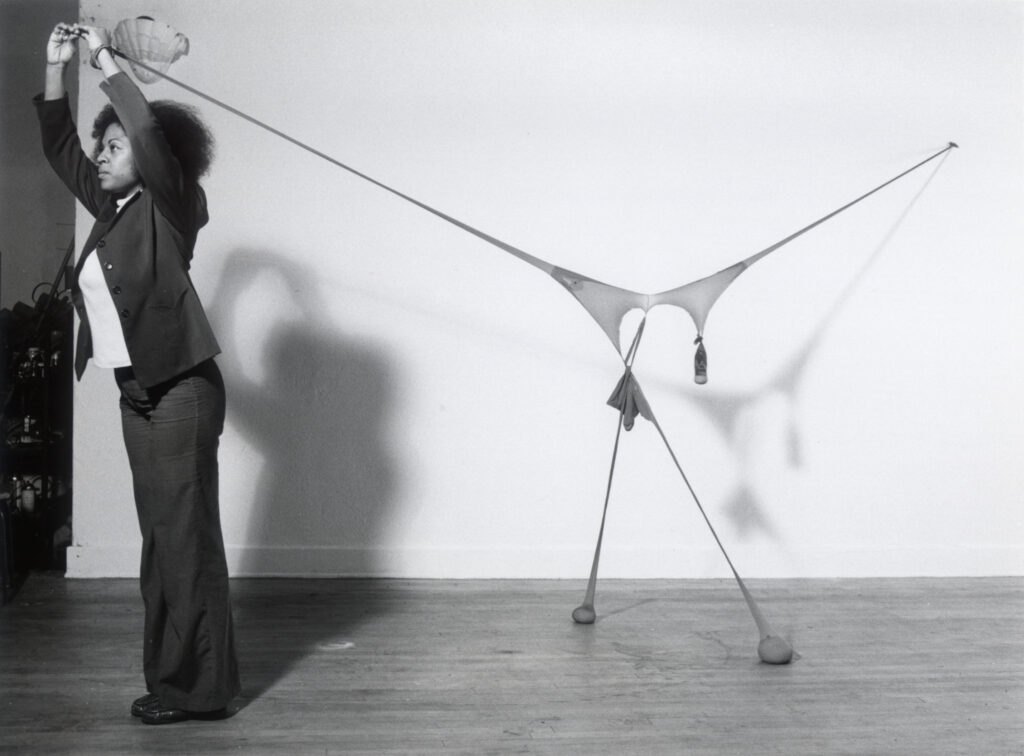
Senga Nengudi is an avant-garde artist best known for her abstract sculpture and performance art. Nengudi was born in Chicago, Illinois, in 1943 and moved to Los Angeles, California, at a young age. She attended California State University, Los Angeles (CSULA) for both her undergraduate and master’s work, as well as completed a program at Waseda University in Tokyo, Japan. Nengudi was active in the avant-garde Black art scenes in Los Angeles and New York during the 1960s and 1970s, and was a member of the Studio Z Collective. She is best known for her R.S.V.P. (Répondez s’il vous plaît) Series featuring pantyhose, which she began in 1975. Nengudi is the recipient of many awards, including the Louis Comfort Tiffany Foundation Award in 2005, the Anonymous Was a Woman Award in 2005, the Denver Art Museum Key Award in 2019, and was elected as a member to the American Academy of Arts and Sciences in 2020. Find this interview and all our oral histories from the search feature on our home page. You can search by name, key word, and several other criteria.
Senga Nengudi was still in elementary school when she and her mother moved to Los Angeles in the early 1950s. Despite a brief stint in New York, for more than thirty years she lived in the greater Los Angeles area first as a child; as a student at CSULA; as an artist and active member of the Studio Z Collection; and as a young mother. That Nengudi called Los Angeles home for so long meant that her formative years of creative expression and early artistic networks sprang from the Southland.
Looking back, Nengudi credits her mother with providing a creative foundation.
“…she was very, very, very conscious of the home and making something home, and so she would decorate the house. And then, say like three years later, she would repaint the walls, she would change the upholstery, she would do all those kinds of things. She was very aesthetically aware, as well as needed a particular beauty in her home to feel good.”
And Nengudi expressed her own creativity through several outlets, remembering, “It’s always been a deal between art and dance with me…” Indeed, during her undergraduate years at CSULA, she chose to major in art and minor in dance—a pairing which supports much of her work.
In the mid-1970s, Nengudi found an outlet to express her love of performance through the Studio Z Collective—a collective of artists interested in improvisation that continued into the 1980s. In addition to Nengudi, Studio Z was comprised of Houston Conwill, David Hammons, Maren Hassinger, and occasionally other artists including Franklin Parker and Ulysses Jenkins. Her relationships with these artists also had a great impact on Nengudi’s artistic career. Thinking of Studio Z’s contribution to her 1978 performance Ceremony for Freeway Fets, which took place under a freeway overpass on Pico Blvd., she muses that “we all kind of supported each other in our efforts.”
Nengudi also found early support from Los Angeles-based gallery owners like Greg Pitts at the Pearl C. Woods Gallery, as well as Brockman Gallery’s Alonzo and Dale Davis. In fact, Brockman Gallery’s dispersal of CETA [Comprehensive Employment and Training Act] funds helped employ artists like Nengudi and Maren Hassinger.
Hassinger remains Nengudi’s longtime creative collaborator. Nengudi recalls that the connection between the two was immediate, “We just kind of instantly became friends, because there was this commonality. She was involved with dance, she was involved with sculpture, all that kind of stuff.” And to why this collaboration with Hassinger has sustained both the passing of years and geographical distance, Nengudi explains:
“Because we believe so much in collaboration. We believe in unity. We believe in bringing the best out in each other…Even though our background is different, our interests are the same. It’s always been dance, performance, sculpture, movement, and this commitment to our art. And when we had some really funky times and we were 2,000 miles apart, the thing that held us together was this commitment to art. And so that kind of carried us through the most difficult things…So all these life events were going on, but the constant was our ability to connect and think and make happen.”
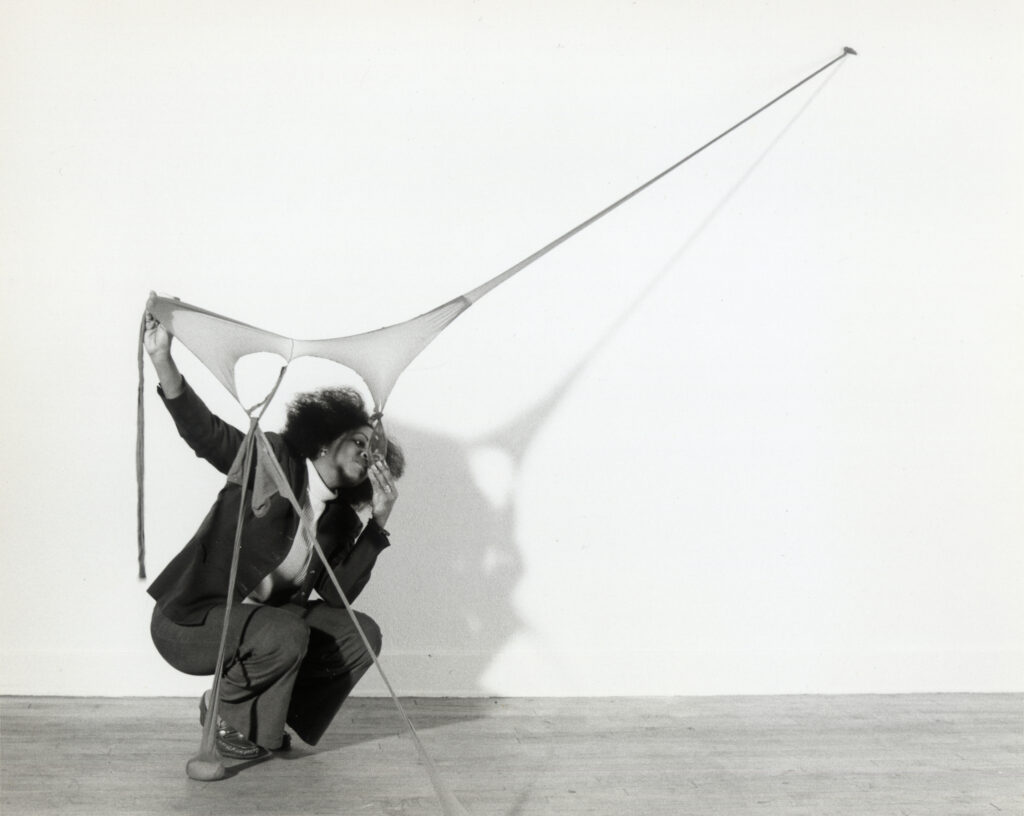
Nengudi’s most recognizable series of work is R.S.V.P., which she started in the mid-1970s. The R.S.V.P. Series, or Répondez s’il vous plaît (respond, please), demonstrated Nengudi’s experimentation with nylon pantyhose. Importantly, Nengudi began working in this medium after the birth of her first son, when she was especially interested in the elastic nature of a woman’s body. She recalls,
“So yes, the explorations were really exciting. I put eggs in them, I broke eggs in them…I used white glue, I used hot glue, which obviously didn’t last that long. I tried everything—resin. Again, it dissolved in the resin. So really, as I was developing the series, it was all about exploring the material…And it took a while to get to…the sand, where I just noticed that…once in the nylons, it had such sensuality to it, because it had this kind of natural body form from the weight of the sand.”
Given the experimental nature of her sand-filled nylon pieces, Nengudi explains, “I thought about them as sculpture first. I did not develop them thinking that I would perform in them.” But Nengudi eventually did embrace the performative potential of these sculptures, even engaging Hassinger to perform with them at the Pearl C. Woods Gallery in 1977 by entwining her body with the material, manipulating it, even dancing with it.
Nengudi has lived in Colorado since the 1980s, and continues to stimulate audiences by creating work that plays with the line between sculpture, installation, and performance in space. However, she has also made significant contributions as an arts educator, especially at University of Colorado at Colorado Springs, and as an advocate of the arts. Namely, she established a community art gallery called ARTSpace in Colorado Springs so that “artists could show their work” and learn “what it takes to have an art exhibit.” The added bonus, of course, was that “the community could come in and see the artwork. It was right there for them.” For someone whose early exposure to creative expression was so formative to her artistic practice, this is a logical next step to engage new generations of artists and viewers. It also connects with her decades-long entreaty to audiences: “respond, please.”
To learn more about Senga Nengudi’s life and work, check out her oral history interview! Find this interview and all our oral histories from the search feature on our home page. You can search by name, key word, and several other criteria.
Science in Context: The UC Berkeley School of Public Health Oral History Project
As we know from our daily experience of the COVID-19 pandemic, public health is a political and cultural flashpoint in American society, as it has been since its emergence as a field of study and area of state authority in the 19th century. Whereas conventional biomedicine situates illness squarely inside the human body — a matter of damage to or malfunction of organ systems — public health looks outward, to the communication of diseases among populations and to the social factors that contribute to health or illness. Public health practitioners look at everything from the aggregate of individual human choices, such as smoking, to larger, deeper historical structures in society, such as the impact of systemic racism on health outcomes. Is it the government telling you how you or your children should behave, or is it science-based advice to help reduce rates of illness, harm, or death in society? Public health is science in political context like few other fields of research.
Well over a decade ago, the School of Public Health at UC Berkeley began to take stock of this positioning and reflect on how a teaching and research institution could better respond to the challenges of science in context. This set of interviews emerged from an effort to document the recent history and institutional evolution of the school. Steve Shortell, who was dean of the school from 2002 until 2013, wanted to chronicle the foundation and growth of the On-campus/Online Professional MPH (master’s of public health) Program; the reinstitution of the undergraduate major in public health; the development of an office of diversity; a graduate program in public health practice and leadership; and a center for health leadership, formerly known as the Center for Public Health Practice and Leadership and currently known as RISE. Dean Shortell also wanted to feature some key leaders associated with these developments.
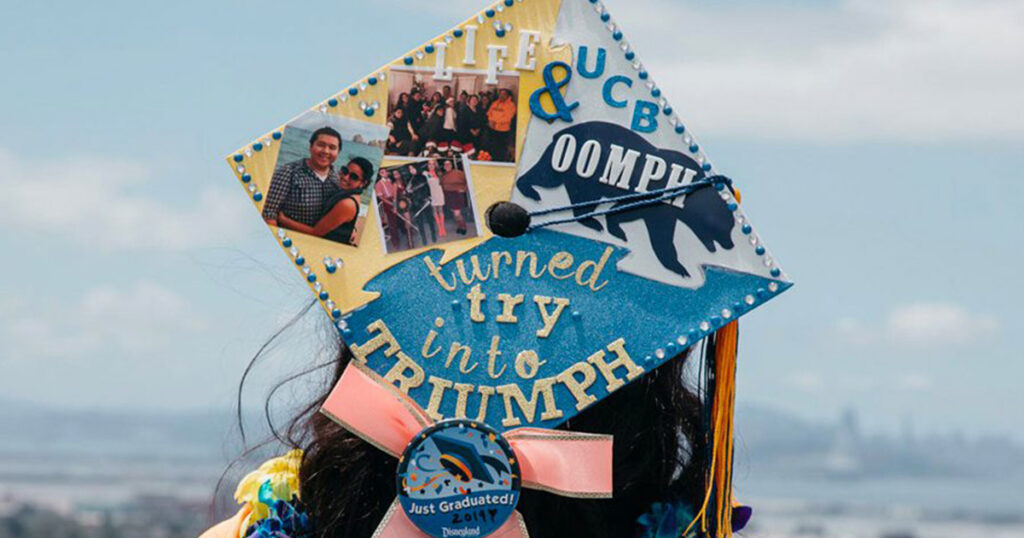
There are three interviews with Dean Shortell that provide the context for the institutional changes during this period, as well as explorations of his career in health management research. Executive Associate Dean Thomas Rundall was also interviewed about multiple initiatives, including his leadership of the graduate programs in health management and co-directorship of the Center for Lean Engagement and Research in Healthcare (CLEAR). Jeffrey Oxendine was interviewed about his role as co-founder and associate dean of the Center for Public Health Practice and Leadership, which began in 2008. Another feature of this oral history project was to explore the reinstitution of the undergraduate major in public health in 2003. Dr. Lisa Barcellos was interviewed in part about her leadership of that program and her research on the genetic and environmental factors involved in autoimmune disease.
There is also a set of interviews surrounding the establishment and growth of the online MPH program. Dr. Nap Hosang was the first director of the hybrid master’s of public health program, and he discusses the unique features of the program’s design, particularly with respect to accessing a diverse and unique pool of student talent, which contributed to the program’s success in subsequent years. Dr. Deborah Barnett was interviewed partly about her capacity as the successor and current leader of the program and as chief of curriculum and instruction. Alberta (Abby) Rincón recounted the history of her time as director of diversity and the foundation of the DREAM (Diversity, Respect, Equity, Action, Multiculturalism) office in the school. In her interview, chair of the Division of Community Health Sciences Dr. Denise Herd discusses the history of research in health disparities and the social determinants of health — a subject that is raised in many of the interviews — and her participation in the campus-wide Othering & Belonging Institute. Finally, Dr. Art Reingold was interviewed about his several decades as director of the Division of Epidemiology, the online MPH program, and teaching in the time of COVID.
If the field of public health is broadly defined as the study of health at the population level, this set of interviews reveals the broadest themes of health in context: the environment that shapes the expression of genes, the factors that lead to the nourishment or deprivation of bodies and minds, the factors that determine who gets to study or teach public health, the factors that shape the delivery of health care, and the contexts that shape the interactions between human bodies and other organisms and pathogens. The overarching story is about how these individuals studied, improved, and optimized institutional attention to these larger contexts, contributing to one of the most extraordinary public health programs in the country.
Read more from the individual interviews below:
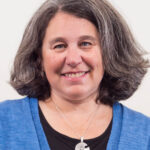
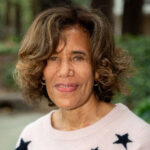
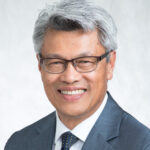
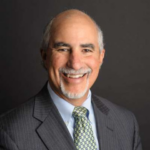
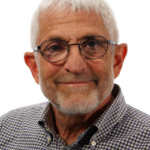
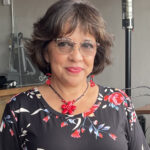
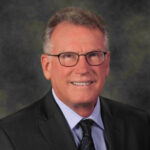
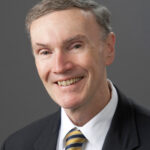
Stanton Glantz: Putting Cardiovascular, Epidemiological, Economic, Political, and Policy Research into Action at UC San Francisco and Beyond
Today we announce the publication of the Oral History Center’s interviews with Dr. Stan Glantz. Dr. Glantz received his doctorate in applied mechanics from Stanford University before embarking on a multi-decade career at UC San Francisco. He contributed engineering concepts to cardiovascular research, biostatistics to epidemiology, and economics to the study of second-hand smoke and policymaking to regulate second-hand smoke, among many other research projects. The oral history explores his political and policy activism, the history of the clean indoor air movement, and his commitments to science and public health, in particular his long struggles with the tobacco industry and efforts to make UC San Francisco a world center for research into second-hand smoke, nicotine addiction, and the broader social determinants of health. His service to UC San Francisco and the University of California is also explored, in particular, his research and advocacy for policy changes on issues ranging from the rights of adjunct faculty to state funding of the UC system. These interviews showcase Glantz’s applied epistemology, his continual reflection on how knowledge is produced and shaped through formal and informal practices for arriving at scientific truth.
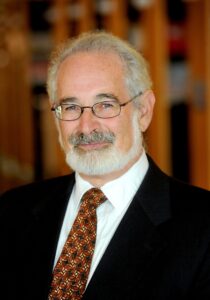
Bancroft Quarterly Processing News
The archivists of The Bancroft Library are pleased to announce that in the past quarter (April-June 2023) we have opened the following Bancroft archival collections to researchers.
Western Americana collections:
The role of women in the Black movement conference materials (processed by Marjorie Bryer)
Jonathan Winters collection on campus and East Bay LGBT activism (processed by Marjorie Bryer)
Edward Miyakawa papers (processed by Marjorie Bryer)
YMCA of San Francisco, Chinatown branch records, approximately 1915-2010 (processed by Marjorie Bryer)
Nan Tucker McEvoy collection (processed by Jaime Henderson and Marjorie Bryer)
Joni Jacobs collection of mayoral campaign materials (processed by Lara Michels)
Louise Taber family papers (processed by Lara Michels and student processing assistant Malayna Chang)
Central American Labor Defense Network records (processed by Marjorie Bryer)
Elaine Dorfman papers and oral histories (processed by Presley Hubschmitt)
Oakland-Piedmont Jewish Community Center records (processed by Presley Hubschmitt)
B’nai B’rith, San Francisco Lodge No. 21 records (processed by Presley Hubschmitt)
Rosene Family papers (processed by Lara Michels)
Women’s American ORT, San Francisco Chapter records (processed by Presley Hubschmitt)
Jerome H. Bayer papers (processed by Presley Hubschmitt)
Keesling family collection of John Henry Barbat correspondence, photographs, and realia (processed by Lara Michels)
Joel Bolster correspondence, 1851-1852 (processed by Lara Michels)
Harold Dobbs scrapbooks and photo albums (additional processing and finding aid written by Lara Michels)
Keesling family collection of Stebbins family papers (processed by Lara Michels)
William R. Sanford and Charles T. Forbes correspondence and sketches related to Native American archaeology, Owens Valley, California (processed by Lara Michels)
Presbyterian Church in Chinatown, San Francisco, additions (2019-08-16) (processed by Lara Michels)
Sierra Club mountain registers and records, 1860-2005, additions (processed by Lara Michels)
Robert (Bob) Edward Rooker rodeo archive (processed by Jaime Henderson)
Warren Hinkle papers (digital files) (processed by Christina V. Fidler)
Vivian Low collection of materials on the Military Intelligence Service Language School, Chinese Division, 1945-2017 (digital files) (processed by Christina V. Fidler)
Judith Heumann papers (digital files) (processed by Christina V. Fidler)
Literary and Arts collections:
Anne S. Perlman papers (processed by Marjorie Bryer)
Robert D. Brotherson collection of the Activist Group of Poets (processed by Marjorie Bryer)
Nancy Karp + Dancers records (processed by Jaime Henderson and Lara Michels)
Claire Van Vliet letters to Frederick W. Hegeman, 1977-1988 (processed by Lara Michels)
Kenneth Perkins papers (processed by Randal Brandt and Sterling Kinnell)
University Archives and Faculty Papers collections:
University of California, Berkeley, Department of Women’s Intercollegiate Athletics records (processed by Jessica Tai)
Harold Biswell papers (processed by Jessica Tai)
Joseph L. Sax papers (processed by Lara Michels)
Robert Tracy papers (processed by Michele Morgan and Lara Michels)
Jaroslav Joseph Polivka papers (processed by Lara Michels)
Lawrence Levine paper (digital files) (processed by Christina V. Fidler)
Jacqueline Ellen Violette de La Harpe papers (additions) (processed by Marjorie Bryer)
Pictorial collections:
Acción Latina and El Tecolote pictorial archive photographic print and poster collection (processed by Isabel Breskin with James Eason)
Fakir Musafar archive (processed by Lori Hines)
John S. Service photograph collection (processed by Isabel Breskin with James Eason)
Photographs from the Noël Sullivan papers (1 unprocessed box)
185 small pictorial collections and single items.
Collections currently in process include:
- The papers of George Barlow, UC Berkeley ichthyologist, ethologist and evolutionary biologist (processing work by Jessica Tai)
- The papers of Michael Paul Rogin, UC Berkeley political scientist notable for his critique of American imperialism (processing work by Marjorie Bryer)
- University of California, Berkeley, American Cultures Center records (processing work by Jessica Tai)
- Western Jewish History Center records (processing work by Presley Hubschmitt)
- Acción Latina records (processing work by Marjorie Bryer)
- Haas-Bransten-Rothman family papers (processing work by Presley Hubschmitt)
The Surprising Ink Recipe of an Ancient Scribe
By Leah Packard-Grams
Ancient History & Mediterranean Archaeology PhD student
Center for the Tebtunis Papyri
Writers in the modern world often have a favorite pen, a preferred color of ink, or quirky handwriting, and ancient writers were no different! Scribal habits are a topic of increasing interest among scholars who study the ancient Mediterranean, and UC Berkeley’s papyrus collection is full of possibilities for the topic that has set researchers abuzz.
UC Berkeley’s collection of papyri, housed in the Center for the Tebtunis Papyri (CTP) on the fourth floor of The Bancroft Library, was excavated from the sands of Egypt 123 years ago, but it has often been remarked that the collection is rich enough to provide work for generations of scholars. The papyri provide crucial insights for our knowledge of daily life in Egypt and can illuminate individual priests, artisans, and scribes in extraordinary detail. One specific group of papyri caught my attention when CTP Director Todd Hickey mentioned it in a graduate course a few years ago: the archive of a scribe who worked for a local record-office in the 70-60s BCE. Since his name has not yet been deciphered from the surviving papyri, scholars refer to him as “Scribe X”. His papyri were found in the crocodile mummies excavated in Tebtunis, Egypt, on behalf of UC Berkeley over a century ago.
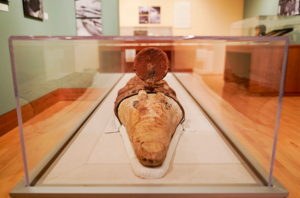
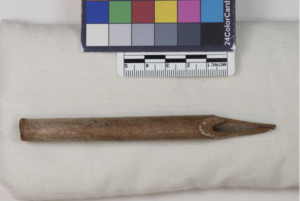
1. (Left: A crocodile mummy on display in the Object Lessons exhibit, Spring 2020. Right: a reed pen from Tebtunis held in the Hearst Museum at UC Berkeley, object no. 6-21420.)
The Scribe X papyri have been examined by several scholars, and two of them have been published in full, while dozens of fragments remain to be edited.1 Previous researchers have found this archive to be unique: It not only represents the oldest collection of documents from a village record-office (grapheion in Greek), it also displays the earliest use of the reed pen (kalamos in Greek) to write the Demotic Egyptian script, which was traditionally written with a rush. The Egyptian scribes of this era did not use the reed pen for Demotic so far as we know, and it would be decades before the reed was used with regularity for the Demotic script. In other words, Scribe X had a favorite pen, and he used it even though it differentiated him from the other scribes around him. This prompted a question: If the scribe used an “atypical” writing instrument, was the ink he used likewise “atypical”?
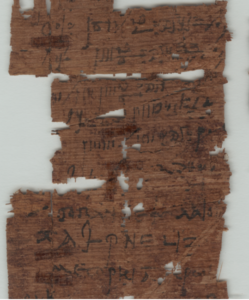
2. (A selection of lines from Scribe X’s account papyrus P.Tebt.UC 2489, displaying Demotic and Greek written on the same document, both written with the reed pen.)
Previous studies by a team of researchers in Europe have proved that there was a shift when scribes began to add copper sulfate to ancient inks of this period in the region of Tebtunis.2 This was a development from the earlier Egyptian ink recipe of gum arabic, soot, and water. In later periods, metallic elements such as lead and copper were intentionally added to the ink to make it more durable. Did this innovative scribe use a more recent ink recipe, or the traditional gum-soot-water recipe?
To find out, a chemical analysis using X-ray fluorescence spectrometry (XRF) was conducted in collaboration with UC Berkeley’s Archaeological Research Facility. One reason scholars favor the use of XRF for testing ancient objects is because it is nondestructive and extremely safe. A portable XRF spectrometer from the Archaeological Research Facility was brought to the Center for Tebtunis Papyri, where Dr Jesse Obert (a recent PhD from the Graduate Group in Ancient History and Mediterranean Archaeology) and I scanned multiple papyri from the Scribe X archive. The XRF spectrometer contains both an x-ray emitter with a precise 5 mm beam as well as a detector which identifies photons that are ejected from the atom when it is exposed to the x-rays. Different elements emit different photon signatures, and the detector “reads” the photon signatures to identify which elements are present in the atoms of the scanned area. We selected nine areas on one bilingual papyrus for scanning and included a number of uninscribed areas on the papyrus as a control. Several other papyrus fragments from the archive were also scanned in subsequent months.
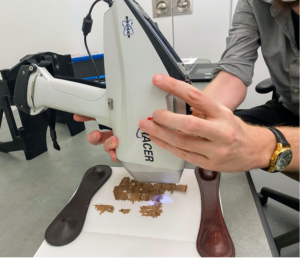
3. (Dr Jesse Obert performing the initial scan with the portable XRF)
The results of the scans were surprising: The machine did not detect any metallic elements in the ink whatsoever. From this information, we can infer that Scribe X used the traditional ink recipe without any of the ink additives that were popular in the era! Such a finding was unforeseen because studies of comparable papyri did not attest to the use of this ink. At the same time, however, it is somewhat un-surprising, because it is well known that Ancient Egyptian traditions in art, religion, language, and culture endured even beyond Alexander the Great’s conquest of Egypt in 332 BCE. What this project has proven is that this ancient ink recipe was one of these enduring traditions, holding on longer than previously thought in the area of Tebtunis.
In April 2023, I presented this study in a poster for the annual meeting of the American Research Center in Egypt and received first place in the “Best Student Poster Competition.”3 More research on the archive is forthcoming (stay tuned for an upcoming feature in the Fall 2023 issue of Fiat Lux!). The project inspired me to get my own certification in XRF scanning, and my work with the archive has allowed me to become familiar with this scribe, his quirks, and his writing habits. The project and the prestigious award it has received are testaments to the open, collaborative attitude of UC Berkeley researchers working across disciplines and across the many research facilities and hubs across campus. I am extremely grateful to Dr Todd Hickey, Dr Jesse Obert, Dr Nicholas Tripcevich, and Directors of The Bancroft Library Charles Faulhaber and Kate Donovan, whose support and encouragement has enabled this project to come to fruition!
Notes
- The two papyri published thus far are edited by Parker 1972 and Muhs & Dieleman 2006. For assessment of the Demotic material, see Muhs 2009 and 2010. The Greek material was surveyed in Hoogendijk 2013.
- See the XRF ink study in Christiansen et al., 2017.
- See Packard-Grams 2023.
Sources
Christiansen, Thomas, et al. “Chemical Characterization of Black and Red Inks Inscribed on Ancient Egyptian Papyri: The Tebtunis Temple Library.” JAS Reports 17, 2017, pp. 208-219.
Hoogendijk, Francisca A.J.. “Greek Contracts Belonging to the Late Ptolemaic Tebtynis grapheion Archive?” in Das Fayyûm in Hellenismus und Kaiserzeit: Fallstudien zu multikulturellem Leben in der Antike, Carolin Arlt, Martin Andreas Stadler, and Ulrike Weinmann, eds., Wiesbaden: Harrassowitz Verlag, 2013, pp. 63-74.
Muhs, Brian. “The Berkeley Tebtunis Grapheion Archive,” in Actes du IXe Congrès des études démotiques, G. Widmer and D. Devauchelle, eds. BiEtud. 147. Cairo, 2009, pp. 243-252.
Muhs, Brian. “A Late Ptolemaic grapheion Archive in Berkeley,” in Proceedings of the Twenty-Fifth International Congress of Papyrology, Ann Arbor, 2007. American Studies in Papyrology, Ann Arbor, 2010, pp. 581-588.
Muhs, Brian, and Jacco Dieleman. “A Bilingual Account from Late Ptolemaic Tebtunis.” Zeitschrift für Ägyptische Sprache und Altertumskunde, vol. 133, 2006, pp. 56-65.
Packard-Grams, L. . “New Pen & Old Ink: XRF Analysis of a Unique Archive from 1st c. BCE Tebtunis,” X-Ray Fluorescence Reports: Archaeological Research Facility: UC Berkeley eScholarship Publications. 2023. https://escholarship.org/uc/item/25n2k5bn
Parker, R.A. “An Abstract of a Loan in Demotic from the Fayum.” Revue d’Égyptologie 24, 1972, pp. 129-136.
PhiloBiblon 2023 n. 4 (June): The Bancroft Library’s Fernán Núñez Collection
I am delighted to announce that thanks to the efforts of Randy Brandt, Head Cataloguer of The Bancroft Library, it is now possible to find all of the volumes in Bancroft’s Fernán Núñez Collection.
This collection of 224 manuscripts comes from the library of the counts and then dukes of Fernán Núnez, a town near Córdoba, principally from that of the 6th count of Fernán Núñez, Carlos José Gutiérrez de los Ríos y Córdoba (1742-1795), although the nucleus of the collection probably goes back to Juan Fernández de Velasco (1550-1613), 5th duke of Frías and viceroy of Milan. According to the Diccionario Biográfico electrónico of the Real Academia de la Historia, Gutiérrez de los Ríos was a man of broad culture who wrote a biography of King Carlos III and was an honorary member of the Real Academia de Bellas Artes de San Fernando in Madrid and the Real Academia Sevillana de Buenas Letras.
University of California, Berkeley
Askins, Arthur L-F. “The Cancioneiro da Bancroft Library (previously, the Cancioneiro de um Grande d’Hespanha): a copy, ca. 1600, of the Cancioneiro da Vaticana.” Actas do IV Congresso da Associação Hispânica de Literatura Medieval. Lisboa: Edições Cosmos, 1991: I:43-47 (BITAGAP bibid 2595)
Oral History Center Releases Life History of San Francisco Supervisor and Education Advocate Norman Yee
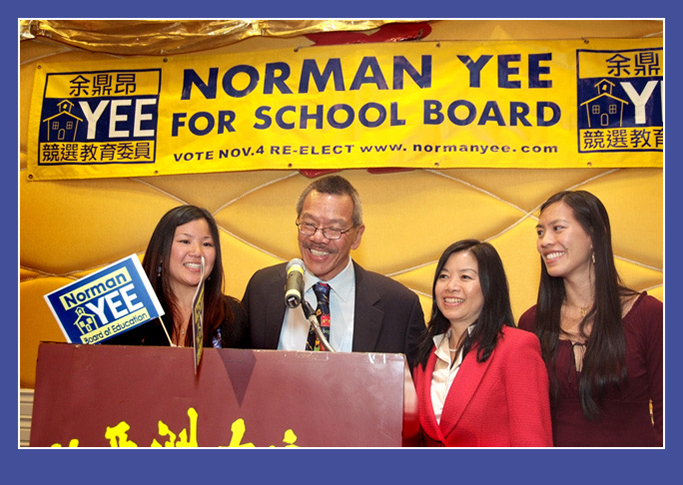
“I am proud to be a Chinatown kid who grew up to be of consequence at City Hall for my own community, and for the City I love. I hope one day my story will be one that creates a history that affords others new futures.” — Norman Yee
The UC Berkeley Oral History Center is proud to announce the release of Norman Yee: Serving the People of San Francisco, From Chinatown to the Board of Supervisors. For most residents of San Francisco, Yee needs no introduction. He is a former member of the Board of Education and Board of Supervisors, elected positions in which he served for sixteen years. Before politics, we worked for over two decades as an innovative facilitator and advocate of multicultural education in San Francisco.
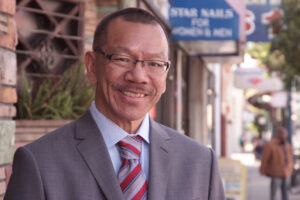
Born and raised in San Francisco’s Chinatown, Yee grew up within a large extended family and spent much of his childhood and teenage years working at his parents’ grocery store. He attended Galileo Academy of Science and Technology, and upon graduation continued his education at City College of San Francisco and UC Berkeley, where he earned a bachelor’s degree in civil engineering. Yet, his career as an engineer barely lasted six months. Although he had a mind for mathematics, his heart drew him to education and the overlooked needs of the children in Chinatown. Leaving his position at Cal OSHA, he volunteered at the Chinatown YWCA, where he worked with the neighborhood’s youth and became involved in several projects aimed at expanding the resources and programs available to children and families in the neighborhood. By 1978, he decided that early childhood education was his calling, and entered the Teacher Corps, a two year program that asks candidates to work in urban school district, in this case East Palo Alto. In exchange he would receive his Master of Arts degree in elementary education.
Yee began his career in early care and education at Wu Yee Children’s Services in Chinatown. There he helped develop one of the first curriculums in bilingual multicultural education. He also taught mixed language classes in the San Francisco School district, as well as ESL (English as a Second Language) courses at City College of San Francisco, where he played a critical role in creating unit-bearing ESL classes. Yee continued to expand the educational opportunities for immigrant and first-generation children. He was a founding member of the Alice Fong Yu Alternative School, the country’s first Chinese immersion public school. He also expanded both the resources and services offered by Wu Yee Children Services, and proved pivotal in the creation of San Francisco’s Public Education Enrichment Fund, a third of which is designated for early childhood programs and education.

Yee entered public office in 2004, marking a start to a political career that would see him serve two terms on the San Francisco Board of Education and two terms on the San Francisco Board of Supervisors. In both positions, he continued to be an unwavering advocate for early childhood education and public services for underrepresented populations in the city. He co-authored Proposition C in 2018, which created universal childcare in San Francisco, as well as Proposition W, which made City College free for San Francisco residents. After being severely struck by a car in 2005, he sponsored the Vision Zero initiative to increase pedestrian safety. He also successfully sponsored initiatives for police reform and one of the city’s most progressive senior housing developments. In 2010, he was elected president of the Board of Supervisors, and played a critical role in helping guide San Francisco through the COVID-19 pandemic.
Throughout his multiple careers, Yee confronted each challenge with hope, determination, and an unwavering commitment to the city and community he sought to serve. The Oral History Center is thrilled to bring his inspiring and untold story to the public.
Find this interview and all our oral histories from the search feature on our home page. You can search by name, keyword, and several other criteria.
About the Oral History Center
The Oral History Center of The Bancroft Library preserves voices of people from all walks of life, with varying political perspectives, national origins, and ethnic backgrounds. We are committed to open access and our oral histories and interpretive materials are available online at no cost to scholars and the public. You can find our oral histories from the search feature on our home page. Search by name, keyword, and several other criteria. Sign up for our monthly newsletter featuring think pieces, new releases, podcasts, Q&As, and everything oral history. Access the most recent articles from our home page or go straight to our blog home.